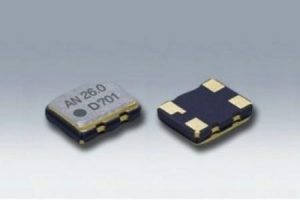The Basics of Electronic Components and Their Uses, classifications
What is meant by electronic components?
- The fundamental component of an electronic circuit is known as an electronic components,electronic device, or circuit element. Typically, it comes as a standalone box containing two or more metal contacts or leads for attachment to electrical equipment. Circuits must link electronic components to electronic devices to fulfil their intended purposes. Soldering electronic components to a printed circuit board is one of the typical techniques to attach them to a device.
- Discrete components are small, standalone containers that include electronic components. As an alternative, to accomplish procedures of varying complexity, several electronic components and circuits may be concentrated, miniaturized, and produced on the surface of a semiconductor wafer. We refer to these as integrated circuits.
The electronic Component Type:
Electronic components are often encased with synthetic resin to increase insulation and protection from the environment to preserve the stability of their functioning.
- Passive components:Electronic components that lack gain or directivity when in use are referred to as passive components.
- Resistor:
The features of a resistor enable it to impede or restrict the flow of electricity. In order to prevent active components from breaking down, resistors are typically utilized as current limiters. As a result, resistance is wired in series with the active components to prevent excessive current from flowing through them. In addition, the resistance functions as a load.
- Transducers:
It is an apparatus that transforms one type of energy into another. Transducers are frequently found in devices like speakers, phones, antennas, sensors, thermometers, etc. When electrical energy is transformed into physical quantities, such as in automation and control systems, transducers are utilized (motion, force, torques, etc.). Bidirectional transducers are devices that can switch from one type of energy to another. It may, for instance, transform sound into electrical energy and vice versa.
- Inductor:
The inductor blocks AC and enables DC to pass through it. Although offering great resistance to AC, it offers poor resistance to DC. Because AC ripples are undesirable, it is employed in devices for certain applications. On top of that, an inductor stores energy as a magnetic field.
- Capacitor:
A capacitor is a device that stores electrical charge in a circuit. It is important in circuits for rectifiers, filters, etc. Moreover, a capacitor’s ability to offer high resistance to DC and low reactance to AC is crucial in a voltage regulator circuit. It eliminates AC swells

- Active components:
Electronic components that are active have gain or directionality as compared to passive components. Vacuum tubes and semiconductor devices fall under this category.
- Transistor:
The terms “Transfer” and “Resistor” combine to give the word “Transistor.” As a result, it moves resistance from one circuit component to another. Resistance will be low on the output side of the input side resistance is high. A transistor is a three-terminal device that may be used as an amplifier or a switch. It may be controlled by current or voltage. Hence it is also known as a current-controlled device or a voltage-controlled device.
- Batteries:
Inside batteries, an electrochemical reaction occurs that produces electrical energy. To change chemical energy into electrical energy, the battery’s compounds go through a transition process. It is an essential component of any electronic circuit since it provides the circuit with power, which is necessary for the circuit to process signals.
- Cathode ray tube:
The television circuit uses a cathode ray tube as the image tube. A cannon made of electrons controls it. The phosphor screen is lit when an electron beam hits it.
The classifications of Electronic components:
Many types of electronic components, such as measuring components and power supply components, can be classified based on a variety of parameters.
- Basic components based on design architecture:
LEDs, resistors, capacitors, inductors, diodes, and transistors. These are the fundamental parts of a circuit because, without them, the circuit cannot function or process information.
- Power Supply Components:
DC power supplies, AC power supplies, and signal generators are some examples of the parts that belong within the power supply component category. They provide energy to the circuit and are also regarded as active components.
- Measuring tools:
Common measurement tools in electrical circuits are millimeters and cathode ray oscilloscopes.
The uses for electronic components:
Many applications, including automation, robotics, biomechanics, power electronics, mechatronics, renewable energy applications, photovoltaic systems, etc., require electronic components. We’ll also go over how electronics are used in various applications.
- Automation:
Several electronic components are employed in a variety of devices that are used in the automation sector.
- Robotics:
Manufacturing industries, semiconductor industries, packing, material assembly, material handling procedures, etc., employ robots to carry out various automated activities. Diodes, LEDs, rectifiers, power supplies, voltage regulators, transistors, and relays are some of the electrical components utilized in the robotics industry. In addition, each mechanized operation needed electronic parts to build a model. Hence, the electronic component is essential in every industry.
- Electronic power:
The conversion or control of electric power using electronic equipment is known as power electronics. Inverters, batteries, converters, variable speed motors, etc., are examples of common components. For greater effectiveness, power loss prevention is required. Thus, the electronic component is necessary for the power electronics system’s quick reaction.
- Mechatronics:
Mechatronics, as its name suggests, combines mechanical and electrical elements. The system, operations, construction, design, and procedures are all subject to enhanced control. Actuators, sensors, mechanical parts, and controls make up the majority of mechatronics.
Conclusion:
Electronic goods are made up of entire electronic components, which are the fundamental parts put together. Knowing the kinds, architectures, qualities, and functions of frequently used electronic components is essential to comprehending electronic technology. ChipSun Technologies offers R&D solutions, turnkey solutions, e-commerce, and other value-added services to satisfy the requirements of various clients, including unique tool manufacturers, innovative design manufacturers, and electrical manufacturing facility providers.
